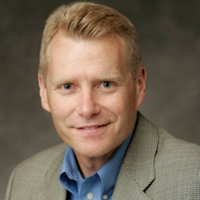 Welcome to The Agency Post. Tell us about yourself.
Welcome to The Agency Post. Tell us about yourself.
I am Michael Mclaren — an Australian who has lived and worked in many countries around the world over the last 20+ years. I live in Connecticut, so I get to enjoy the morning and evening commute to the city each day. I am intrigued by different countries, cultures and their relationships with marketing, technology and communications, and it has been a joy to have the opportunity to experience the diversity of our business around the world as my career has evolved.

Tell us more about MRM and the type of work you do there.
MRM is a global digital marketing company. We help create, manage and measure customer experiences with brands. Living at the intersection of creativity, technology and performance, we make the complex simple and the simple compelling. My role is primarily focused on our people and our clients — making sure that our people are doing rewarding and inspiring work, and that we are collectively delivering the type of quality programs and service that will help our clients succeed.
Why do you think it is important to have a diverse perspective in advertising? What benefits does this bring to projects and your clients?
The very essence of creativity is connecting things in new and different ways. In order to come up with these different connections, you NEED a range of diverse perspectives. People from different backgrounds, races, religions, etc., often see things from a different perspective, so if you want to be a creative company, you need diversity! Our clients win when we bring them big, bold ideas that are on strategy and on point for the audiences they seek — and this comes from ensuring that we bring a whole range of diverse perspectives to the discussion!
From your leadership experience at McCann Worldgroup, what can you tell us is still working about the traditional agency model? What isn’t working?
There are many different agency models out there, and there are pros and cons associated with all of them. The old “push” advertising model is pretty limited in what it can achieve. The fundamental question that you need to ask is, “Is what you are doing ‘for’ the customer or ‘to’ the customer?” Audiences today don’t want to be talked “to.”
Brands need to engage people at a much deeper level, offering them value and enabling them to interact with the brand and express themselves and their beliefs. Brands (and agencies) need to “pull” more engagement and earn the right to have a relationship with their consumers by providing them with content and experiences that they truly value.
What must agencies do to retain top talent? What types of professionals do you look for when recruiting staff for MRM?
There are several things that motivate talented people to want to come in and work. I think the most important question is, “Can they thrive in the environment you have created for them?” To answer this requires a lot of thought, preparation and commitment from the organization.
Are they doing rewarding and motivating work? Are they growing professionally and personally as a result of being at the agency? Are they working with people they like to be around and people with whom they would choose to spend time? Are they being fairly rewarded for their hard work? These are all questions that good companies must have good answers for if they hope to attract and retain the best and brightest talent.
At MRM, there is not one type of person we seek here (see my comment above on diversity), but we look for certain core traits: people who are collaborative, curious, flexible and fun. People who are not afraid to roll up their sleeves and get some work done, and people who don’t take themselves too seriously!
MRM has offices in more than 22 countries and works with a wide variety of global brands. What makes a brand successful in translating its message across borders?
We are lucky to have the opportunity to work with some great global brands. Great brands stand for something — a fundamental truth — that has the ability to connect and resonate with people across borders, across language and regions. Our MasterCard client is a great example. “Priceless” is a powerful idea that resonates around the world, and we have been able to uncover and enhance a vast array of priceless experiences all around the world in culturally relevant, respectful and truthful ways, all while continuing to build a rich emotional bond that consumers have with the MasterCard brand.
What’s different about forming a digital-first strategy and simply adapting a traditional campaign for the web? Can you provide some examples of work that performs well across platforms and mediums?
A digital-first strategy requires the agency to think holistically about the entire customer experience and understand all the brand touchpoints over time along that journey. It is a very different process — you can’t simply take an offline communications model and move it online. It requires understanding the customer’s digital environment — where they engage, where they look for information, where they share their views, where they seek and form opinions, where and how they shop the category — and creating a comprehensive engagement plan based on data that is going to allow us to create a meaningful and powerful relationship with our client’s brands.
Some of the work we do is a great example of this. In the B2B space, we know that IT managers don’t have a lot of time and are difficult to reach through traditional vehicles, so we leverage a variety of web and mobile platforms to allow them to get the information and insight they are looking for. This way, we can engage them better and build a deeper, more long-lasting relationship with Intel. You could never do this through a traditional approach.
What changes in mobile advertising do you see on the horizon in the next three to five years?
I believe mobile advertising is still at a very nascent stage of development. What is currently out there is actually pretty awful. The ad formats are limited, often lacking interactivity and delivering no real value to the consumer. Also, a lot of the work does not take advantage of the full power of the software platforms. This is going to change dramatically over the next five years — particularly with the growing market share of smart phones (now more than 50 percent of the global market). More and more advertisers will take full advantage of the bandwidth and computing power on these devices, and we will see an incredible array of rich experiences come to life. Mobile is also going to rule in the hyperlocal marketing game, and I expect to see it become a much stronger focus in the next three years.
As someone who has a wide global outlook, what emerging trends in advertising worldwide are you most excited about and why?
Technology is driving constant change in our business, which makes things really exciting! Personally, I like to think of it as if we are still in the “black and white TV” stage — we have not seen color yet, and HD, 3D, etc., are just on the horizon. I truly believe we will see this sort of transformation, and the velocity will be incredible.
I have just spent the past three years in Japan, and understanding how they have evolved their keitei (mobile phone) ecosystem provided me with incredible insight. The level of sophistication and integration into every facet of life there was truly staggering. We are very excited about what’s happening in mobile and the capabilities of this rapidly growing global galaxy of smart phones — everything from their sensing capabilities, identification, security, transaction, communications, communities — the mobile world is going to evolve at a staggering pace. Also, we are starting to see much richer, smarter and more effective customization and personalization of messaging and programs. So we are getting closer and closer to the nirvana of knowing each and every customer as an individual and always delivering the right message to the right person at the right time.
One reason you love what you do: I get to work with great, smart, energetic and creative people, and I get to see and understand the evolution and adoption of new technologies every day. So this absolutely never gets dull!
Mentor: I’ve been very lucky to have several people over the years who have provided me with great insight and guidance.
- Mark Gault — McCann Erickson
- Mike Delman — Microsoft
- Leigh Clapham — Ammirati Puris Lintas/MasterCard
I hope everyone seeks out and engages with mentors throughout their careers — they are an important pillar of development and an incredible resource in times of need.
Must read book: There are so many great books out there, but if I were going to nominate a “must read,” I would say, “A Confederacy of Dunces” by John Kennedy Toole. Aside from the fact that it is a brilliant, Pulitzer Prize-winning, comic masterpiece from a first-time author, the story behind the story is incredible as well.




![Black Friday 2014: Is Your Brand Ready for the Online Rush? [Infographic]](https://blog.hubspot.com/hs-fs/hub/53/file-2166364551-png/blog-files/black-friday-2014.png)


